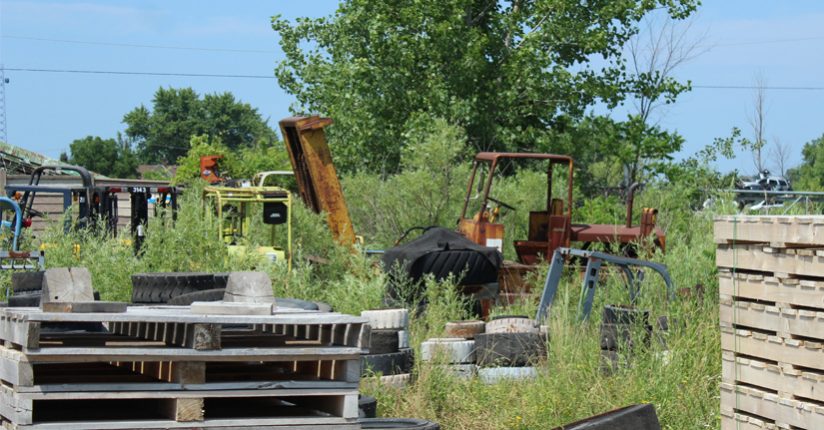Forklift Replacement Cycles
When should I replace my older, less efficient forklifts? This is an important question to ask and must be carefully considered in order to maximize your equipment ROI, reduce maintenance costs and improve productivity. Unfortunately, many companies put off replacing their equipment for as long as possible to avoid shelling out the upfront costs associated with an equipment purchase. The issue with that strategy is that it ignores other indirect expenses such as total cost of ownership, maintenance costs and losses in productivity, all which should factor into such a decision.
The Problem
Deciding when to replace a forklift is a complex decision that should incorporate information from a number of factors, yet, most companies fail to take all of these into account and end up keeping their lift trucks longer than they should. Rather than purchase a new unit, they choose to repair their aging equipment without realizing that it ultimately costs more to keep an older forklift running than it does to purchase a new one. The disproportionate costs associated with maintaining an older unit are further compounded by a number of hidden costs that aren’t immediately apparent without a detailed analysis of total cost of ownership, maintenance costs and productivity.
Total Cost of Ownership
At first glance, without an in-depth analysis, the purchase cost of a forklift might seem like the largest component of your overall ownership costs. However, it is generally estimated that only 20% of the total materials handling cost of a forklift or lift truck is associated with the initial purchase. The other 80% of those costs are tied to maintenance, labor, fuel and insurance costs. Without a comprehensive system to analyze these costs, you’d be forgiven for assuming that the initial purchase cost is the most expensive component as some of these hidden costs are easy to miss.
Everything mentioned above combines to determine what’s known as the economic life of a forklift. The economic life of a lift truck only lasts as long as its maintenance costs do not exceed what it would cost to replace it. Once this occurs, it no longer makes sense to hold on to the unit and it should be replaced. Yet most companies get caught up on the useful life of a lift truck instead of its economic life. Many lift trucks remain useful for 10 years or more however, when total cost of ownership is examined, these units generally do not operate in a cost-effective manner. After this tipping point is reached, costly overhauls, replacing major parts or components, and/or frequent minor repairs increase overall operating costs.
Productivity Losses
Beyond the direct repair costs associated with regular breakdowns and repairs, there is also an opportunity cost that must be taken into account. Whenever a unit must be taken out of service for repairs, it cannot actively contribute to the overall productivity of your business. The opportunity cost of this downtime equals the profits and revenue that would’ve been produced if that unit was in service instead of down for repairs. Whatever this figure amounts to it must be added to the maintenance and ownership costs when calculating the total cost of ownership for a given unit. Obviously, this figure will only rise as downtime increases in lockstep with more frequent repairs and increased maintenance requirements.
When to Replace Your Lift Trucks
A number of factors will extend or reduce the economic lifespan of your lift truck. Generally speaking, internal combustion units remain economically viable for 10,000 hours or 5 years provided no more than 2,000 hours are put on the unit per year. Electric forklifts, with fewer moving components, tend to last a bit longer at 14,000 hours or 7 years with less than 2,000 hours of usage per year. However, these figures are general guidelines and fluctuate based on a few factors such as the following:
The type and severity of the application
It goes without saying that the more extreme your application, the harder it will be on your lift trucks. If your application exposes your forklift to temperature extremes or caustic and/or corrosive materials, the economic life of your forklift will be reduced. On the other hand, operating a lift truck in a clean temperature controlled indoor warehouse will prolong its economic viability.
Usage intensity in terms of hours per month or year
As mentioned above, the 2,000 hour per year mark represents a bit of a tipping point. Go past this point and the longevity of your equipment will, on average, decrease by about 20%. If you operate your forklift for less than 2,000 hours per year, you’ll receive a slight bump in longevity but not as much as you’d think. Regardless of the accumulated hours, equipment age still presents an effective limit to the economic lifespan of a forklift.
Maintenance and upkeep
One of the best ways to prolong the economic utility of your lift trucks is to institute a planned maintenance program for all of your units. Here, you’ll ensure the manufacturer’s recommended service intervals are honored as well as ensure that the unit receives preventative maintenance that helps avoid premature or unnecessary breakdowns and repairs. This will ensure that you lift trucks operate with greater efficiency and longer than those that only receive maintenance when an issue arises.
In Closing
To maximize your equipment ROI we recommend that you institute a planned replacement schedule. Generally speaking, this will follow the 10,000 – 12,000 hour range that we established above as the economic lifespan of a lift truck. By using a replacement schedule for your units on a fixed interval, you can ensure that you maximize the output and cost efficiency of your lift trucks.

